Plumbing in a dishwasher or washing machine
Dishwashers and washing machines are plumbed in using similar techniques. Some appliances only need a cold water feed so only one hose is required. As far as the waste hose is concerned, there are normally two options for where it can go – either into the trap (U-bend) below a sink, or directly into the waste pipe through an upstand section of pipe. Below is shown how to connect to a spigot adaptor on the trap. If you have an upstand system already in place, you simply need to push the appliance waste hose sufficiently into the top of the upstand – some manufacturers will have a bracket to hold the pipe curved in position – and some water authorities insist on this sort of set up.
You should always check the instructions that come with your appliance as it may have a non-return valve fitted to prevent the possibility of the back siphonage of waste water. If your waste discharges into an upstand waste pipe, as long as there is an air gap (gap between the discharge pipe and where it discharges outside), you do not need to fit a non-return valve. If you are discharging into the sink waste (as shown below), a non-return valve should be fitted, or make sure that the waste pipe loops higher than the sink overflow. Fit a hook to hold at the appropriate height if necessary.
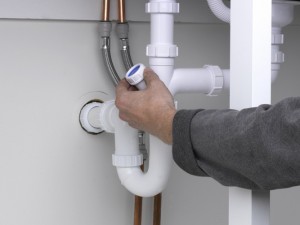 |
1. Make sure water supplies are turned off. Remove the stop end from the adaptor point trap. You may have a spigot adaptor point in place already. |
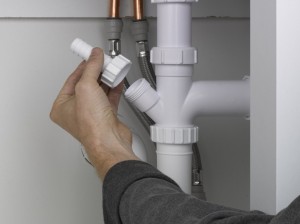 |
2. If you have a spigot, make sure there isn’t a bung inside blocking it. If not, simply screw the adaptor in place firmly, but do not overtighten. |
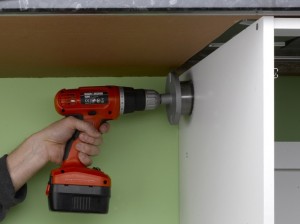 |
3. Unless there is easy access behind the units, you will need to cut a hole in the side of the unit larger than the waste pipe diameter. Attach a hole saw to the drill/driver. |
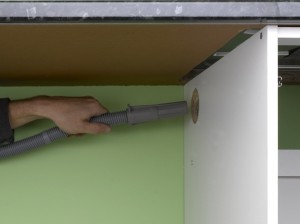 |
4. Thread the appliance waste pipe through the hole and to the spigot on the trap assembly beneath the sink. |
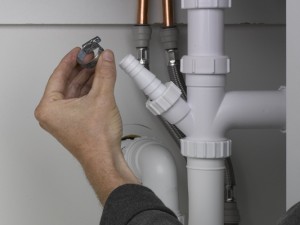 |
5. Position a jubilee clip over the spigot on the waste pipe. Undo it sufficiently so it will be able to fit over the appliance waste pipe. |
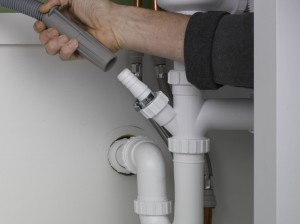 |
6. Push the appliance waste pipe onto the spigot as far as it will go. Twisting slightly as you push will always help to achieve a solid connection. |
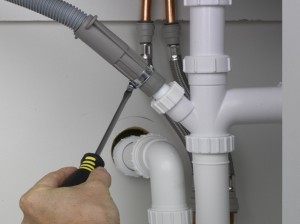 |
7. Move the jubilee clip over the appliance waste pipe end and tighten using a slot-head screwdriver to secure the connection and ensure no leakage. |
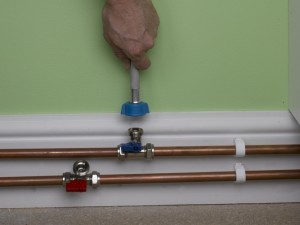 |
8. For supply pipes, check your machine to see if it requires just a cold supply or both hot and cold. This will vary between models. |
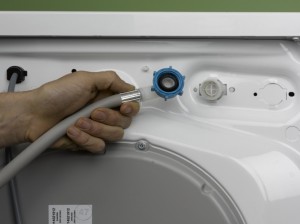 |
9. Check that the washer is correctly positioned in the threaded connector before screwing in place on the back of the machine. |
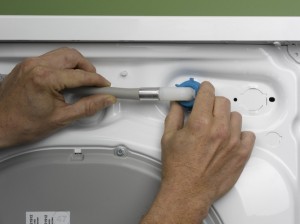 |
10. Ensure you do not cross thread the connection, otherwise it will leak. Always begin twisting the connector on by hand. |
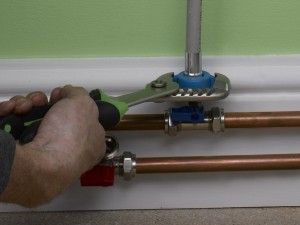 |
11. Gently tighten both connections with some slip-joint pliers. Do not overtighten as this will damage the thread of the connector. |
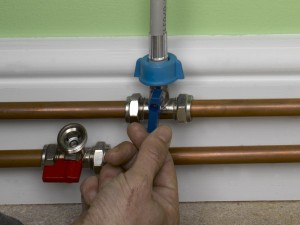 |
12. Turn on the isolation valve(s) and check for leaks. Most leaks occur because of the washer in the connector. This is simple to change if necessary. |
Dishwasher and washing machine plumbing – some further advice
- Supply pipes for dishwashers and washing machines are normally recognised by their red and blue tap sections on a simple isolation valve. If you do not have these valves, you must have some fitted.
- If the supply pipe connections for the water are outside the unit that is enclosing the appliance, cut access holes through the side of the unit so that the supply pipes may be threaded through. This is the same process as shown for the waste pipe in steps 3 and 4 above, using a hole saw attachment on a drill/driver.
- Both a washing machine and dishwasher may be fed into the waste assembly under a sink using two spigot adaptors. However, avoid having both appliances on at the same time as it is best not to have both discharging into the waste assembly simultaneously.
- It may be necessary to purchase a larger section of trap in order to get the spigot adaptor.Â

Hi Julian, this post has been very useful to know how to fir the waste hose into the piping using the same tube end. I was struggling and you made me realize it was easire than I thought. Just need to buy a jubilee clip. The grey nozzle fits in the barb fitting. Many thanks!